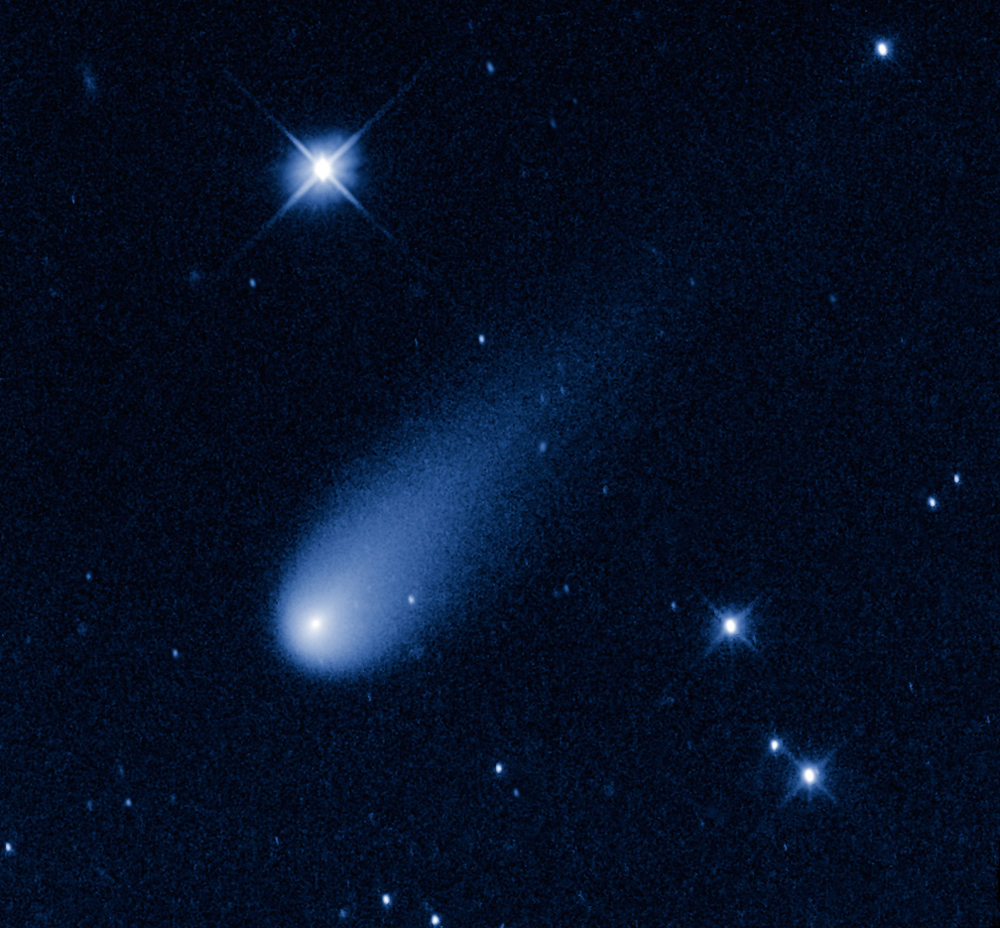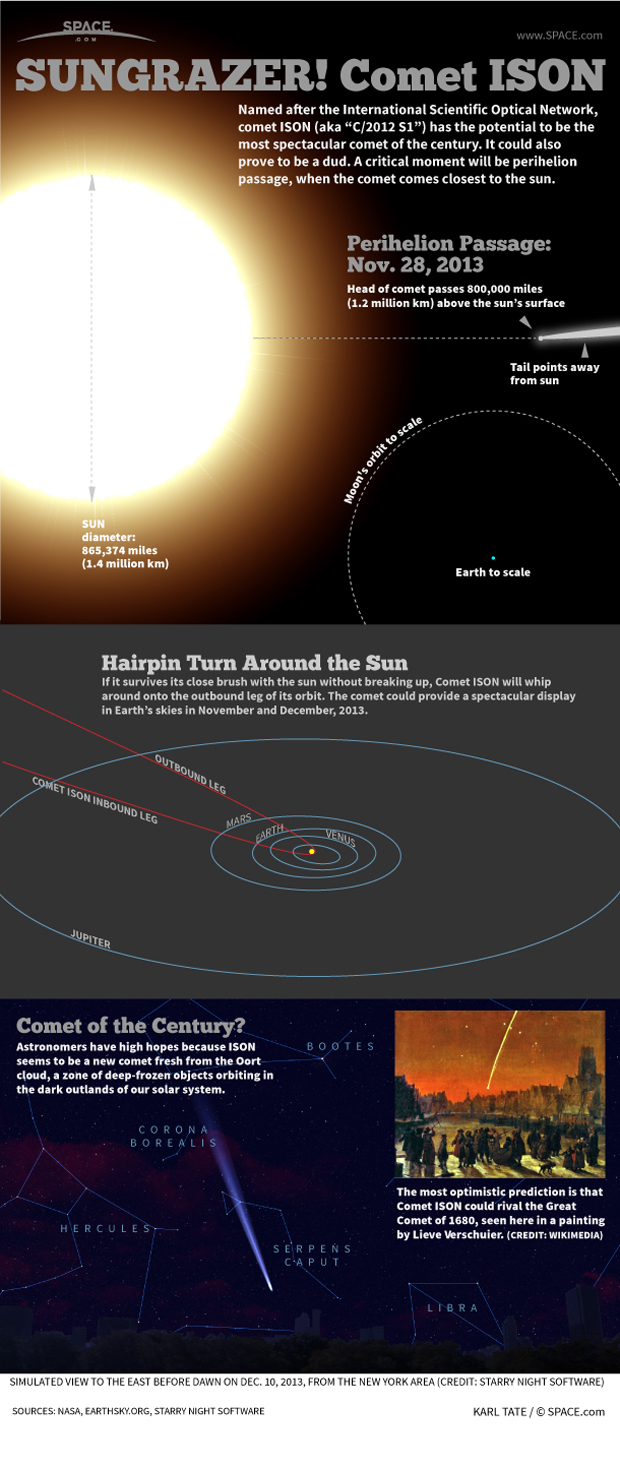Potential 'Comet of the Century' to Buzz Mars Soon

Earthlings may be treated to a dazzling celestial display this fall as Comet ISON makes a suicidal plunge toward the sun. But spacecraft exploring Mars is poised to get close-up views of the icy wanderer first.
"Comet ISON is paying a visit to the Red Planet," astronomer Carey Lisse of the Johns Hopkins University Applied Physics Lab, said in a statement. "On Oct 1st, the comet will pass within 0.07 AU from Mars, about six times closer than it will ever come to Earth."
One AU, or astronomical unit, is the distance between the Earth and sun, about 93 million miles (150 million kilometers). Comet ISON's Mars flyby, at 0.07 AU, will be about 6.5 million miles (10.4 million km).
Comet ISON may brighten enough for NASA's Mars rover Curiosity to see it from the surface of the Red Planet. However, Lisse said the best chance for a Martian sighting lies with the space agency's Mars Reconnaissance Orbiter. [Photos of Comet ISON: A Potentially Great Comet]
The MRO satellite is equipped with a powerful telescope named HiRISE that is intended to take pictures the Red Planet's surface. But researchers think the instrument will be capable of turning its gaze into space to detect the comet's atmosphere and tail.
"The camera is designed for rapid imaging of Mars," the HiRISE's telescope's principal investigator, Alfred McEwen of the University of Arizona, said in a statement. "Our maximum exposure time is limited compared to detectors on other space telescopes. This is a major limitation for imaging comets. Nevertheless, I think we will detect Comet ISON."

The satellite is set to take observations of the comet on Sept. 29 and Oct. 1 and 2. The observations could help researchers prepare for a comet that is set to fly even closer to Mars in October 2014.
Get the Space.com Newsletter
Breaking space news, the latest updates on rocket launches, skywatching events and more!
"The science value of observing Comet ISON is hard to predict. We've never tried such a thing before," McEwen said. "However, this is good practice for Comet Siding Spring, which will pass much closer to Mars in 2014."
A total of 16 NASA spacecraft and even more telescopes on Earth will be observing Comet ISON as it approaches.
"Our goal is to have every telescope on Earth pointed at the comet when it emerges from the sun," says Lisse. "The Mars flyby will give us a sneak preview, providing data we need to predict what we might see."
On Nov. 28 — Thanksgiving Day in the United States — ISON will make its closest approach to the sun, or perihelion, skimming just 730,000 miles (1.2 million km) or so above the surface.
If the icy dust ball doesn't get ripped apart by extreme solar forces, some astronomers have said it could be the "comet of the century," possibly shining brightly enough to be seen during the daytime.
"If ISON's nucleus is much bigger than 0.5 km, it will probably survive its Thanksgiving Day brush with the sun," Lisse said. "It could turn into one of the most spectacular comets in many years."
Follow Megan Gannon on Twitter and Google+. Follow us @SPACEdotcom, Facebook or Google+. Originally published on SPACE.com.
Join our Space Forums to keep talking space on the latest missions, night sky and more! And if you have a news tip, correction or comment, let us know at: community@space.com.

Megan has been writing for Live Science and Space.com since 2012. Her interests range from archaeology to space exploration, and she has a bachelor's degree in English and art history from New York University. Megan spent two years as a reporter on the national desk at NewsCore. She has watched dinosaur auctions, witnessed rocket launches, licked ancient pottery sherds in Cyprus and flown in zero gravity on a Zero Gravity Corp. to follow students sparking weightless fires for science. Follow her on Twitter for her latest project.









